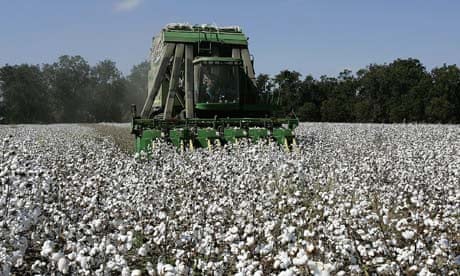Cotton has high maintenance costs, requires pesticides to thrive, dominates agricultural systems that include it, and leaves soil depleted of nutrients, so why is such a damaging crop seen to be the only natural fibre in the textile market? Despite the negative effects, cotton continues to dominate the natural fibre market, accounting for 78%. Over the past century there has been so much research around the cotton plant that it still remains the first choice in fibre production. However, with the risk of demand outweighing supply, the cracks are beginning to show.
No other natural fibre has ever been seen as an alternative to the 'white gold' that is cotton. It is a trusted source of income and with recent increases in yields, farmers around the world continue to grow the crop.
However, new research and development is raising the awareness of alternatives that offer both sustainable and economic appeal. Among them there is a group of fibres (of particular interest to me) known as bast fibres. This is a term used to describe a number of natural fibres that can be extracted from the stem of certain plants, such as jute, flax, hemp and stinging nettle. Recent advances in technology are starting to allow bast fibres to be processed and used with other natural materials to create new economically viable fabrics.
The textile industry has seen a growing demand for natural fibres. Harrison Spinks, a UK bedmaker, runs a sheep farm and grows hemp to use for mattress fillings. A leading fabric manufacturer, Camira Fabrics, has introduced a new fabric made from hemp fibre and wool to meet the demand in the contract market for sustainable and cheaper products available in the UK.
Examples like these show that businesses are seeking cheaper alternatives as increases in the oil price and rising transport charges start to amplify the economic importance of UK sourcing. Bast fibres such as hemp can be grown in the UK. Companies like Camira and Stork Brothers are working to build and sustain a supply chain of these crops in the UK. Hopefully this will provide the opportunity to educate farmers about the benefits of growing hemp.
Although some cotton is produced according to strict consideration for the environment, the majority of the world's production has become very intensive and requires large amounts of energy, fertiliser, pesticides and water which have detrimental effects on the environment. Hemp can be grown with fewer inputs, without the use of pesticides, on smaller areas of land and can be used to create a durable, sustainable, renewable and flame retardant fabric.
These benefits may not yet shift the mainstream view of the market but as attitudes continue to change, it is clear that businesses will place greater value on products' provenance and production methods. If a product can be a sustainable alternative but still maintain the qualities of cotton, then there is no reason for it to not become a viable resource in the textile industry.
Dr Matthew Horne is a lecturer in agricultural crop production and works a fibre researcher, examining and developing the agricultural production of stinging nettles, hemp and flax in the UK for the production of fibre for the textile industry.
This content is brought to you by Guardian Professional. Become a GSB member to get more stories like this direct to your inbox

Comments (…)
Sign in or create your Guardian account to join the discussion